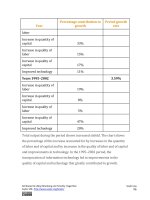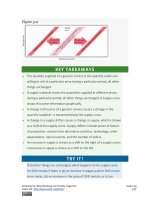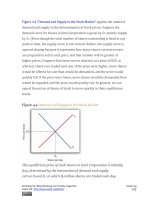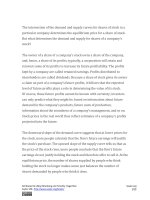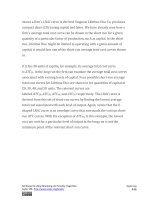Authors libby rittenberg 465
Bạn đang xem bản rút gọn của tài liệu. Xem và tải ngay bản đầy đủ của tài liệu tại đây (444.65 KB, 1 trang )
9.1 Perfect Competition: A Model
LEARNING OBJECTIVES
1. Explain what economists mean by perfect competition.
2. Identify the basic assumptions of the model of perfect competition
and explain why they imply price-taking behavior.
Virtually all firms in a market economy face competition from other firms.
In this chapter, we will be working with a model of a highly idealized form
of competition called “perfect” by economists.
Perfect competition is a model of the market based on the assumption that
a large number of firms produce identical goods consumed by a large
number of buyers. The model of perfect competition also assumes that it is
easy for new firms to enter the market and for existing ones to leave. And
finally, it assumes that buyers and sellers have complete information about
market conditions.
As we examine these assumptions in greater detail, we will see that they
allow us to work with the model more easily. No market fully meets the
conditions set out in these assumptions. As is always the case with models,
our purpose is to understand the way things work, not to describe them.
And the model of perfect competition will prove enormously useful in
understanding the world of markets.
Assumptions of the Model
Attributed to Libby Rittenberg and Timothy Tregarthen
Saylor URL: />
Saylor.org
465
